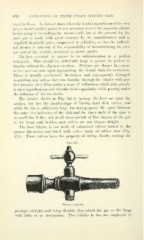Page 632 - My FlipBook
P. 632
630 EXTRACTION OF TEETH UNDER NITROUS OXID.
must be fresh. In fonucr times when the dentist nianul:ietnre(l liis own
gas, to insure i)ertect purity it was necessary to test the ammonia nitrate
before using it for making tlie nitrous oxid, but at the present day the
pure gas is made with great accuracy by the manufacturers and is
supplied chemi(!ally pure, compressed in cylin(U'rs, so that the individ-
ual dentist is relieved of the responsibility of manufacturing his own
gas and of the troubles necessary to secure purity.
The first essential to success in its administration is a perfect
INHALER. This should be sufficiently large to permit the patient to
breathe without the slightest exertion. Patients are always in a more
or less nervous state upon approaching the dental chair for extraction.
There is usually accelerated heart-beat and consequently deranged
respiration, and unless they can breathe through the inhaler with per-
fect freedom they labor under a sense of suffocation which adds greatly
to their apprehension and disturbs their equanimity while passing under
the influence of the anesthetic.
The inhaler shown in Fig. 565 is perhaps the best one upon the
market, but has the disadvantage of having hard disk valves, and
while the size is sufficiently large for most purposes the space between
the outer circumference of the disk and the inner circle of the pipe is
so small that it does not at all times permit of free ingress of the gas
to the lungs, and, besides, such valves are not always airtight.
The best inhaler is one made of vulcanized rubber turned to the
proper dimension and fitted with valves made of rubber dam (Fig.
571). These valves have the property of fitting closely, making the
Fig. 571.
Thomas's inhaler.
passages airtight, and being flexible they admit the gas to the lungs
^vith little or no obstruction. This inhaler is the one employed by


